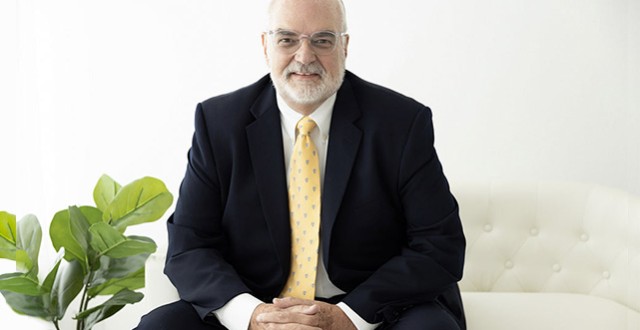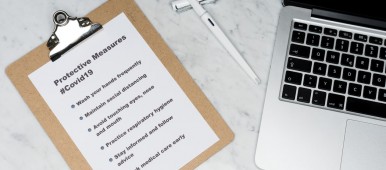
- Mediation
- Arbitration
- Court Neutrals
- Online Dispute Resolution
- Technology
- Court Decisions
- More
- Legislation
- Healthcare
- Guest Posts
- John DeGroote
- John C. Fleming
- Rick Freeman
- Professor Peter Friedman
- Honorable W. Royal Furgeson, Jr.
- James M. Gaitis
- Laura A. Kaster
- Professor John Lande
- Philip J. Loree, Jr.
- Michael McIlwrath
- F. Peter Phillips
- Professor Alan Scott Rau
- Professor Thomas J. Stipanowich
- Professor S.I. Strong
- Richard Webb
- Glen M. Wilkerson
- International arbitration
- Regulation
- Sports and Entertainment
- We’re Back!!!!Well, it’s been a while since we published and that is about to change. Since I spent much of last year becoming
 JAMS Welcomes Karl Bayer to its Panel of NeutralsJAMS, the world’s largest private alternative dispute resolution (ADR) provider, is pleased to announce that Karl Bayer
JAMS Welcomes Karl Bayer to its Panel of NeutralsJAMS, the world’s largest private alternative dispute resolution (ADR) provider, is pleased to announce that Karl Bayer Class Action Waivers in Arbitration Agreements: The Twenty-First Century Arbitration Battleground and Implications for the EU CountriesLinda S. Mullenix, Morris & Rita Atlas Chair in Advocacy at the University of Texas School of Law, has written “Class Ac
Class Action Waivers in Arbitration Agreements: The Twenty-First Century Arbitration Battleground and Implications for the EU CountriesLinda S. Mullenix, Morris & Rita Atlas Chair in Advocacy at the University of Texas School of Law, has written “Class Ac Picking the Proper Technological Tool for Problem-Solving in ArbitrationProfessor Amy J. Schmitz, John Deaver Drinko-Baker & Hostetler Chair in Law and Co-Director of the Translational Data An
Picking the Proper Technological Tool for Problem-Solving in ArbitrationProfessor Amy J. Schmitz, John Deaver Drinko-Baker & Hostetler Chair in Law and Co-Director of the Translational Data An
Recent Posts
Using Rule 11 to Keep Your Case Moving During COVID-19
Remember when Rule 11 was used just to memorialize a discovery extension? Meet the new and improved Rule 11. It’s a powerful tool to keep your clients happy and your cases moving when you don’t have regular access to the courts.
Continue reading...Remote Arbitration Best Practices: Technology
Over the last few weeks, numerous organizations have issued guidance on conducting remote arbitration through video teleconferencing.
Continue reading...International Council for Online Dispute Resolution and National Center for Technology and Dispute Resolution Facilitate ODR
Due to the ongoing COVID-19 worldwide health crisis, online dispute resolution (“ODR”) processes have become increasingly important for most dispute resolution professionals.
Continue reading...AAA and CPR Issue Remote Arbitration Hearing Guidance
Both the American Arbitration Association (“AAA”) and the International Institute for Conflict Prevention and Resolution (“CPR”) have issued new guidance to assist arbitrators and parties engaging in virtual hearings due to the ongoing COVID-19 health crisis.
Continue reading...Arbitration
Charlotte Alexander, Associate Professor of Law of Legal Studies at Georgia State University, and Nicole G. Iannarone, Assistant Professor of Law at Drexel University Thomas R. Kline School of Law have published an article titled, “Winning, Defined? Text-Mining Arbitration Decisions,” Cardozo Law Review, forthcoming.
Continue reading...Mediation
Last week, San Francisco-based bank Wells Fargo reportedly asked a federal judge in Utah to send a proposed class-action lawsuit that was recently filed against the company to arbitration.
Continue reading...Healthcare Disputes
Health Care Conflict Resolution Part II: Separate the People from the Problem
by Holly Hayes We started our health care conflict resolution series with applying the principled negotiation method to health care (post available here). Principled negotiation involves: Separating the people from the problem. Focusing on interests, not positions. Generating a variety of possibilities before deciding what to do. Insisting that the result be based on some objective standard. This post will focus on “separating the people from the problem”. Here is an example of a healthcare conflict where the parties misunderstood each other, got angry and upset and started taking things personally: Radiology Director: Technician X, I have a patient complaint here that says it took over an hour for a basic scan to be performed last week. What were you doing that caused such a delay? Technician X: Which day, which patient? What were the details? Radiology Director: That doesn’t matter, what matters is that now we have a complaint against our department. Our reputation as a department and as a patient-friendly hospital is on the line. I’m going to have to put this complaint in your file. Now, what happened? Technician X: I guess it doesn’t matter, what matters is the complaint. I’ll try to see that it doesn’t happen again. Radiology Director: You do that. Another complaint like this and we’ll have to come up with a disciplinary action plan. What happened? The problem, “we cannot have complaints like this” became a personal attack on Technician X. If we can separate the people from the problem, we can maintain a good working relationship and successfully address the problem. In Getting to YES, Roger Fisher and William Ury outline three categories to think about in terms of dealing with people: perceptions, emotions and communication. Perceptions: In our example, the parties did not “put themselves in the other person’s shoes”. Had the Radiology Director listened to and responded to Technician X when he asked for the details, she might have gained a better understanding of the technician’s perception of the problem and why it happened. Understanding Technician X’s point of view would have allowed the Director to proceed with new information to solve the actual problem of a delay of service. Emotions: The Director did not recognize or explain her own emotions and why she was worried about the complaint. She also did not have any idea about how the technician felt about the complaint. When parties are freed from the burden of unexpressed emotions they can more likely work on the problem. Communication: In our scenario, the Director did not listen actively and acknowledge the technician as a human being with potentially useful information to address the problem. Let’s change the situation to separate the people from the problem using the techniques described above: Radiology Director: Technician X, I have a patient complaint here that says it took over an hour for a basic scan to be performed last week. Can you tell me more about what happened with Patient Y on Date Z? Technician X: I remember that patient and that incident. That was the day our CT scanner broke and we didn’t have a spare part, so we had to schedule all of the patients on one machine. We tried to explain the problem to all of the patients, but the waiting time was much longer than the departmental goals we have set for ourselves. I felt really bad about Patient Y because she was next in line when the scanner broke and her wait was the longest. Radiology Director: It is upsetting to me when we have a complaint because I have to respond to the CEO about what happened. You have given me some good information though. Do we need to work with our Physical Plant Maintenance Department and come up with a better system to keep spare parts on hand? Technician X: I was really upset about the delay, too. I would be happy to schedule a meeting with the Plant Department and come up with a better system. Technician A has experience in this area from another facility, could she work with me and we can bring you some recommendations to consider in the next two weeks? Radiology Director: Yes, please work with Technician A and the Physical Plant Department. Maybe we can turn this negative complaint into a positive by making sure it doesn’t happen again. I feel so much better now about communicating our plan of action to the CEO. When the Radiology Director dealt with Technician X as a human being and dealt with the problem on its own merits, she was able to maintain a good working relationship while successfully addressing the problem. Look for the next post in our series where we will discuss focusing on interests, not positions in the health care setting. We welcome any comments on this post and any suggestions for upcoming posts in this series. Holly Hayes is a mediator at Karl Bayer, Dispute Resolution Expert where she focuses on mediation of health care disputes. Holly holds a B.A. from Southern Methodist University and a Masters in Health Administration from Duke University. She can be reached at: holly@karlbayer.com.
Continue reading...The Influence of Roger Fisher
by Holly Hayes “Through his writings and teaching, Roger Fisher’s seminal contributions literally changed the way millions of people around the world approach negotiation and dispute resolution,” said HLS Professor Robert Mnookin ‘68, chair of the Program on Negotiation at Harvard Law School and director of the Harvard Negotiation Research Project. “He taught that conflict is not simply a ‘zero-sum’ game in which a fixed pie is simply divided through haggling or threats. Instead, he showed how by exploring underlying interests and being imaginative, parties could often expand the pie and create value.” The quote above from The Harvard Law School blog is from an article highlighting the many accomplishments of the life of Roger Fisher (1922 – 2012). Several years ago, we published a five part series on applying, to healthcare, the principled negotiation method from the book Getting to YES by Fisher and William Ury. The method pioneered by Fisher and Ury continues to be applicable to the healthcare setting in 2012. See our Part I in the series below and look for Parts II to V over the next few weeks. We appreciate any comments you may have about using the principled negotiation method in healthcare. Holly Hayes is a mediator at Karl Bayer, Dispute Resolution Expert where she focuses on mediation of health care disputes. Holly holds a B.A. from Southern Methodist University and a Masters in Health Administration from Duke University. She can be reached at holly@karlbayer.com.
Continue reading...Legal Research
About Disputing
Disputing is published by Karl Bayer, a dispute resolution expert based in Austin, Texas. Articles published on Disputing aim to provide original insight and commentary around issues related to arbitration, mediation and the alternative dispute resolution industry.
To learn more about Karl and his team, or to schedule a mediation or arbitration with Karl’s live scheduling calendar, visit www.karlbayer.com.
















